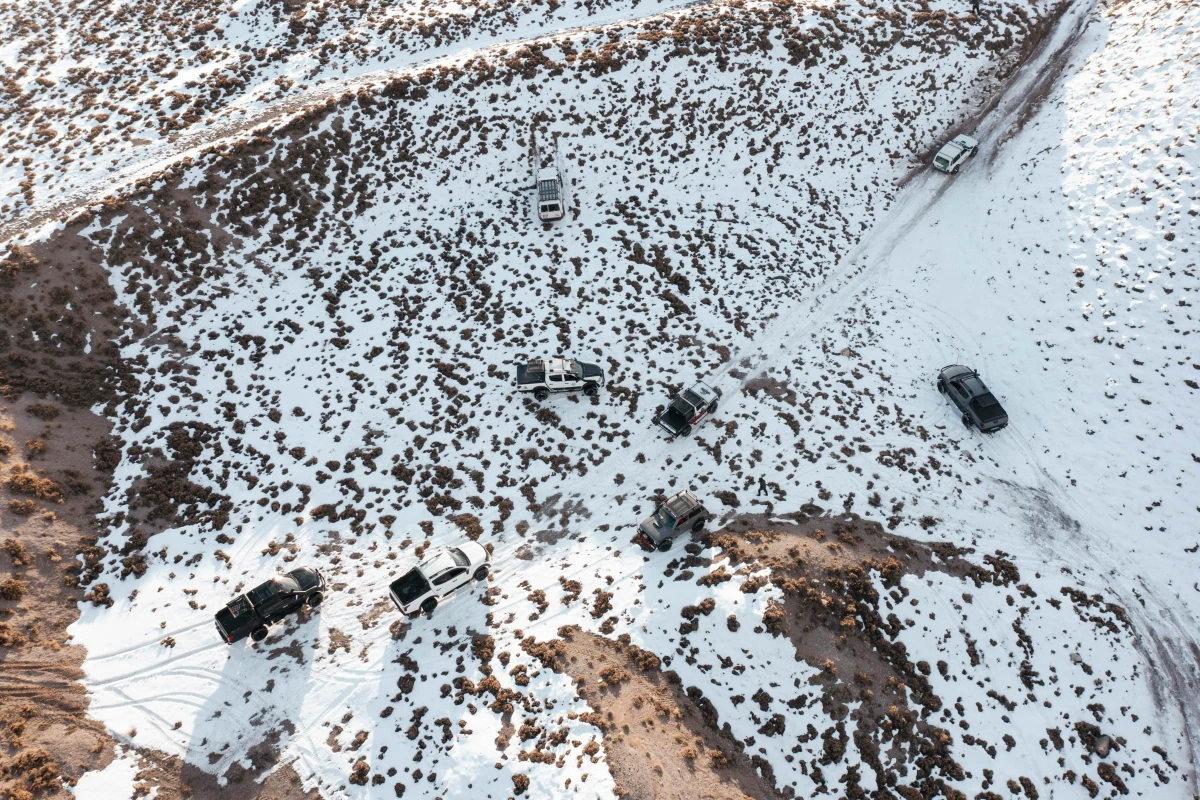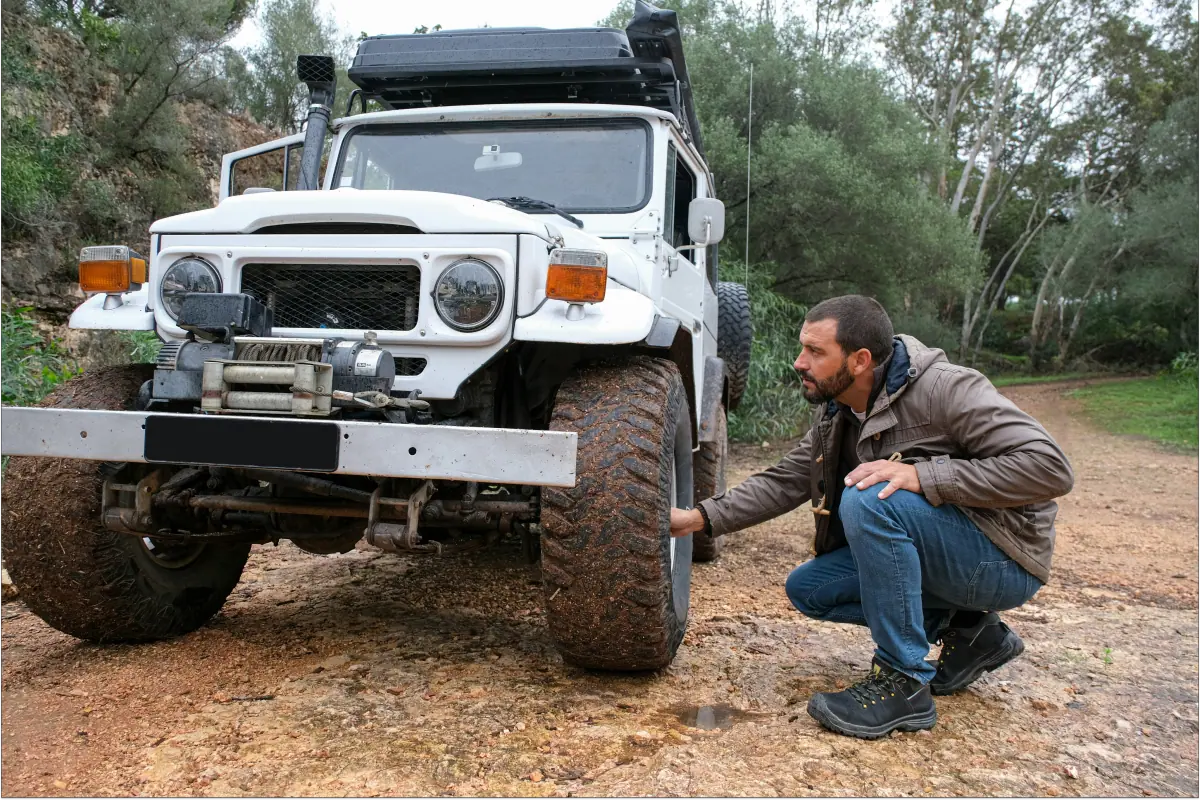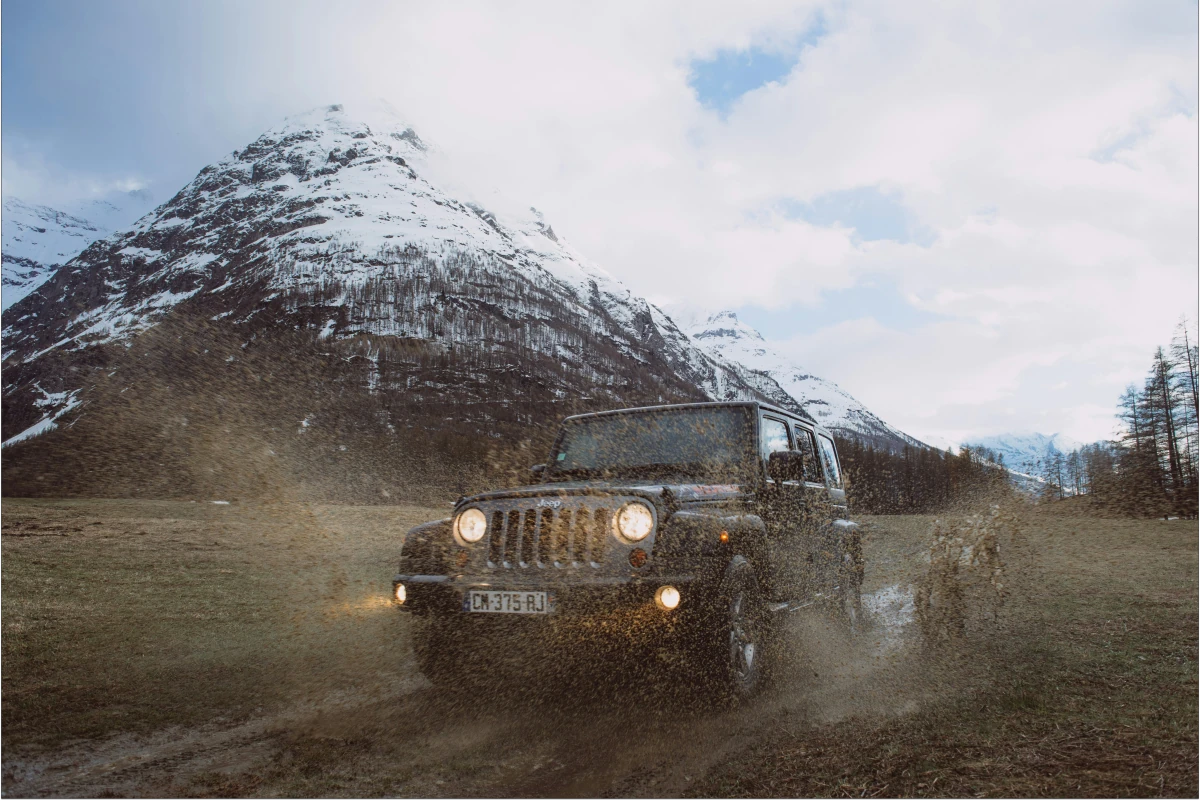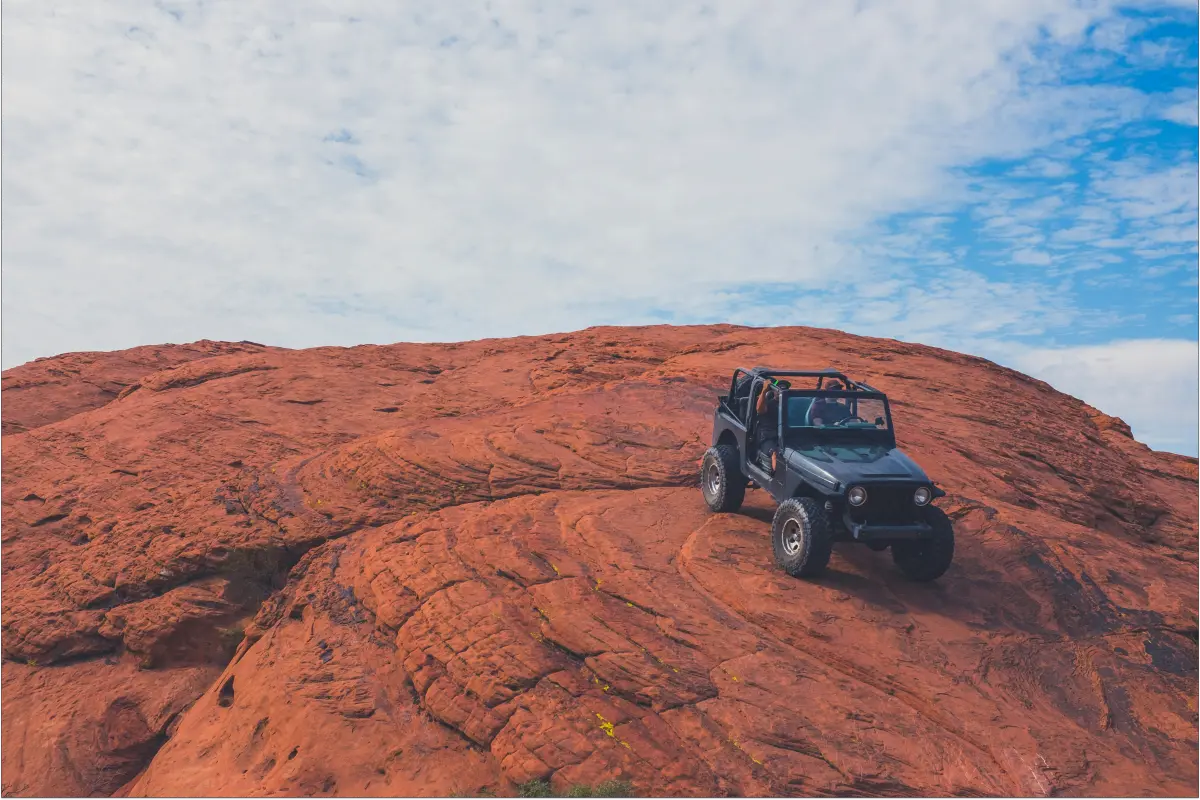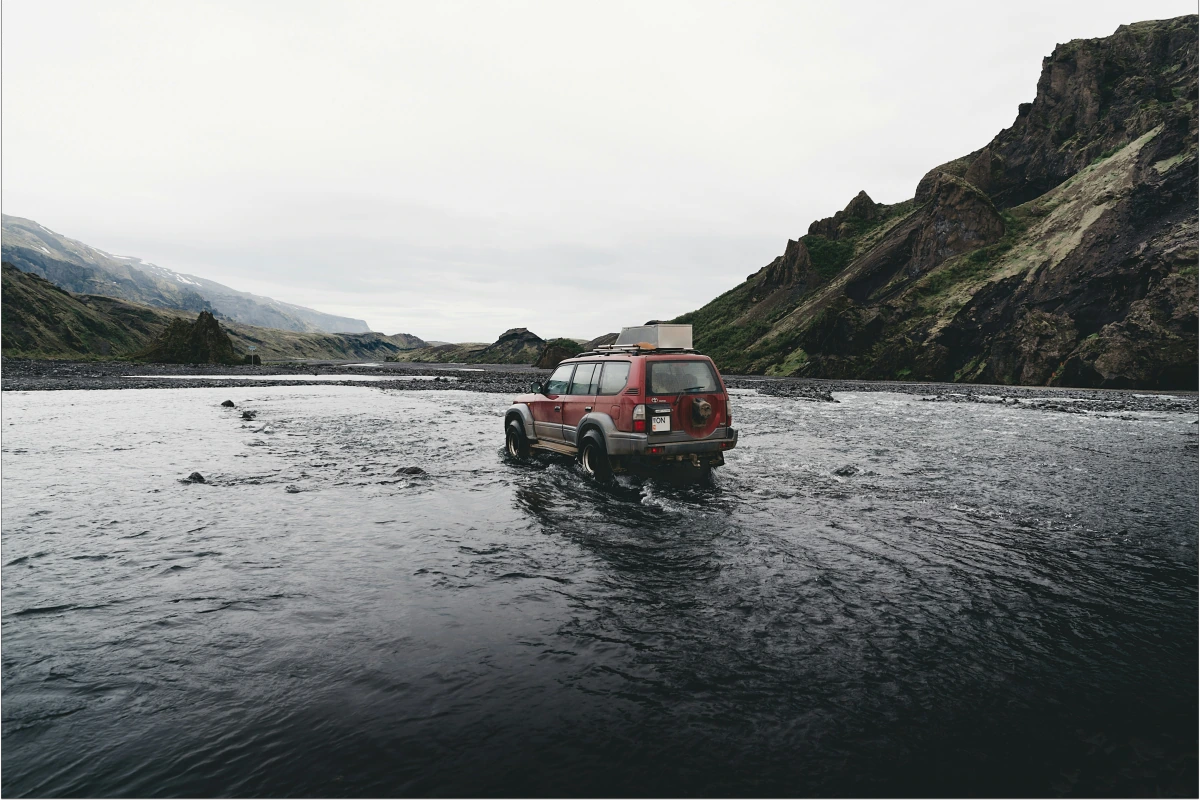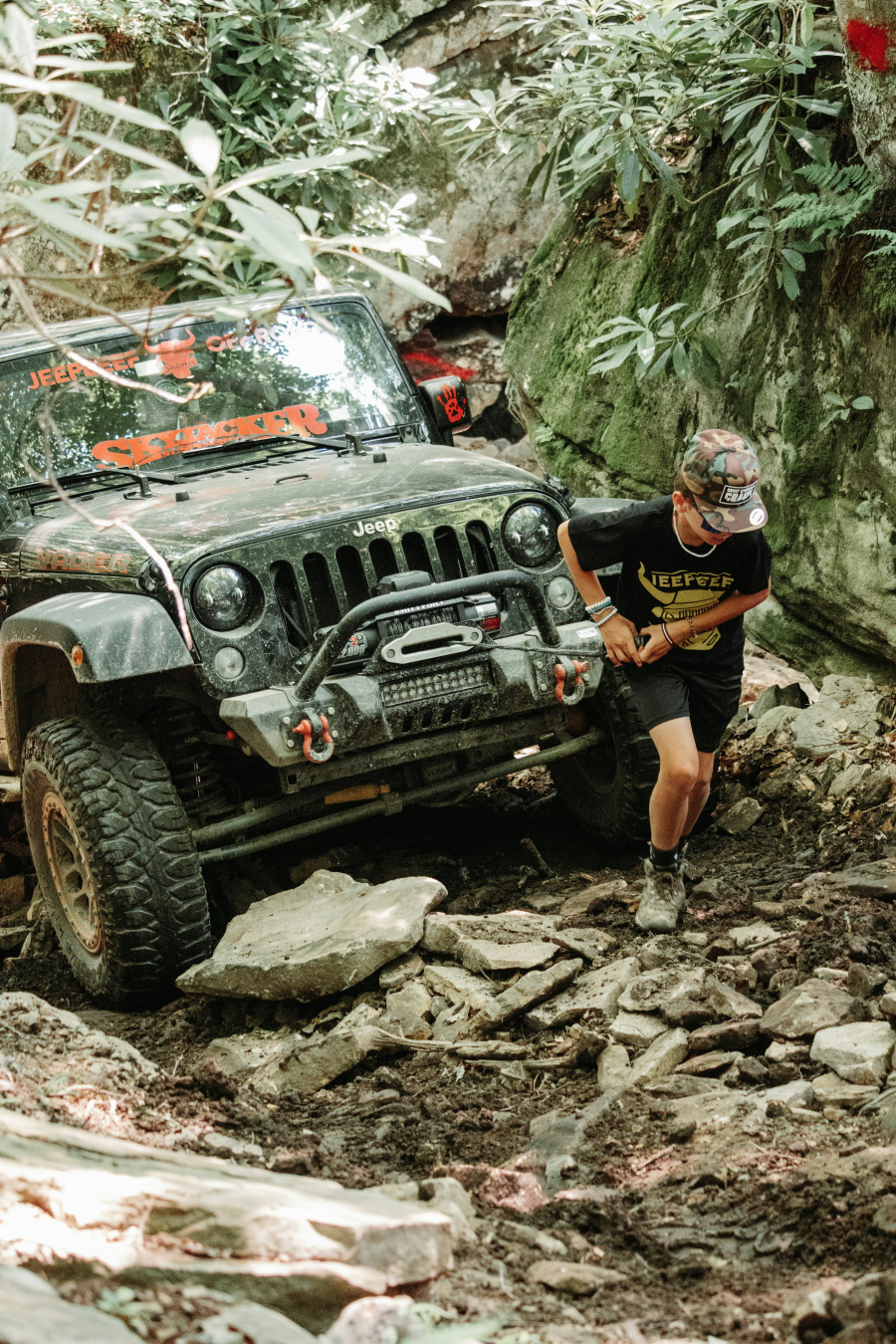Off-Road Driving Techniques (Sand, Rock, Mud, Snow, Gravel)
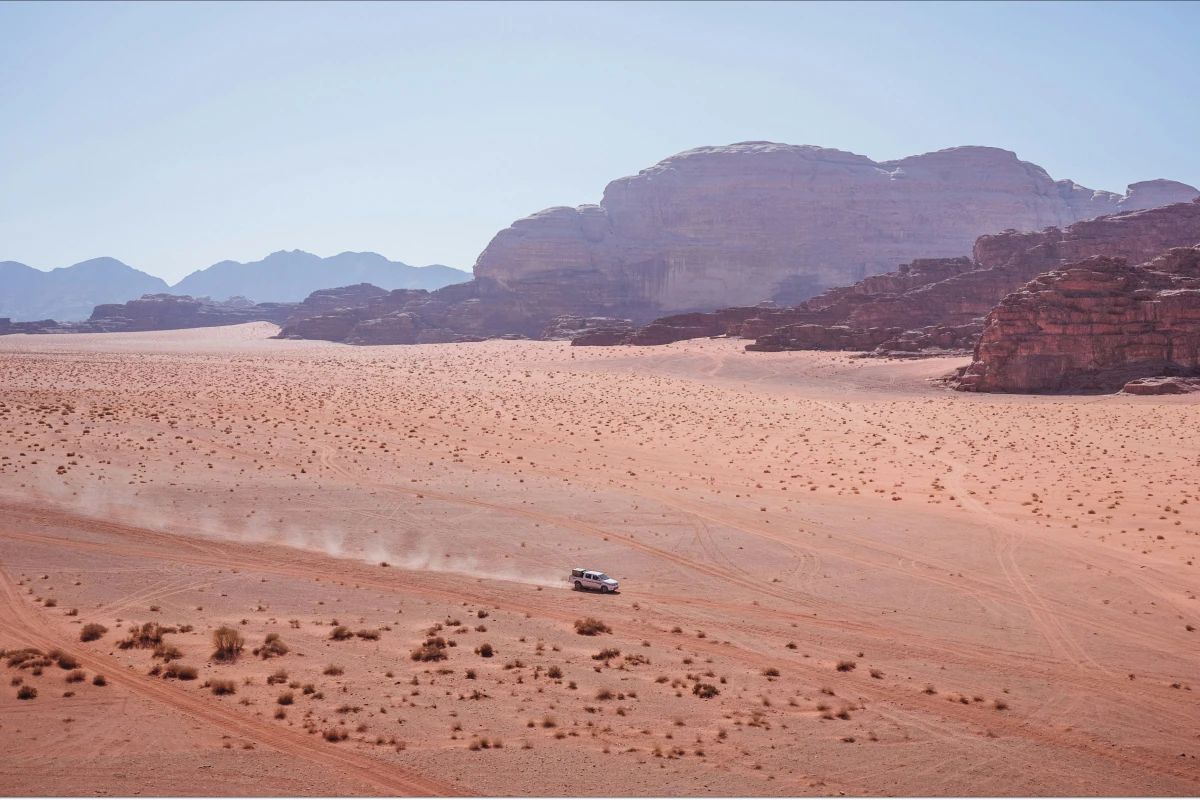 Stuck in mud, sand, or snow? Let’s learn about off-road driving techniques.
Stuck in mud, sand, or snow? Let’s learn about off-road driving techniques.
If there’s one skill that’s crucial for overlanding success, it’s off-road driving. If you aren’t able to drive on a variety of terrains, from rock to sand, snow to mud, then your overlanding career is going to stall pretty darn quickly. Recovering a stuck vehicle is never fun.
Of course, even if you own good off-road vehicles, you might go on dozens of adventures and never really have your skills tested. But all it takes is one mistake in the backcountry to start a chain of events that turns a dream trip into a nightmare.
I’ve written about this before here at Dialed, but a couple years back a buddy and I made the dumb decision to get ambitious with a 2WD rental truck in the Nevada high country in high summer. We ended up mired in a sandtrap, having to climb a mountain to get reception and call a 4X4 towing late at night. We narrowly avoided having to hike out 25 miles to the nearest road, with scant water in our cans.
So the above doesn’t happen you… Here’s a quick guide to off-roading!
First, we’ll talk about drivetrains. Then we’ll cover the basics of off-roading, like airing down your tires, and finally advanced concepts, like terrain recognition. This isn’t an exhaustive guide, there are plenty of stuff we won’t get into, but it should give you a decent idea of off-road driving basics and a few off road driving tips.
Drivetrains: 2WD vs. AWD vs. 4WD
If you’re a serious overlander, you’re probably working with four-wheel drive (4WD) off-road vehicles, but many of us—this author included—often drive two-wheel drive (2WD) or all-wheel drive (AWD) vehicles into the backcountry as well. Here’s a quick breakdown of the differences.
2WD (Two-Wheel Drive):
How it Works: Power is delivered to either the front or rear two wheels.
Pros: Lighter weight, better fuel efficiency, lower cost.
Cons: Limited traction in challenging terrain, less control in slippery conditions.
Ideal For: Maximizing fuel efficiency (saving money) for missions where most of the driving is done on paved roads or highways, with a bit of off-road driving on mellow terrain, like well-maintained dirt roads or gravel tracks. Suitable for lighter vehicles with minimal gear.
4WD (Four-Wheel Drive):
How it Works: Power is distributed to all four wheels, usually with selectable high and low ranges.
Pros: Excellent traction and control in challenging off-road conditions, superior pulling power for towing.
Cons: Heavier, less fuel-efficient, more complex and expensive.
Ideal For: Most serious overlanders. Essentially a requirement for driving on varied terrain like mud, sand dunes, rocky trails, and steep inclines. Best for heavier vehicles with substantial gear loads.
AWD (All-Wheel Drive):
How it Works: Power is automatically distributed to all four wheels as needed, typically with a focus on optimizing on-road performance.
Pros: Enhanced traction and stability in slippery conditions, improved handling on paved roads.
Cons: Less capable than dedicated 4WD systems in extreme off-road situations, typically less efficient than 2WD.
Ideal For: Overlanders who encounter a mix of on-road and mild off-road conditions, such as snowy roads, unpaved forest tracks, and occasional light trails.
Extras: Locking Differentials, Torque Vectoring, and Gear Ranges
Beyond the basic drivetrain options, there are additional features you could look for in an overlanding vehicle.
Locking Differentials: A car’s differentials allow wheels on the same axle to rotate at different speeds, which is necessary for turning. On slippery surfaces, however, a standard differential can send all the power to the wheel with the least traction, leaving you spinning in air. Locking differentials overcome this issue by ensuring power is distributed evenly and forcing both wheels to turn at the same speed.
Torque Vectoring: Torque vectoring is another advanced feature found on AWD vehicles, though some advanced 2WD vehicles also use it. In short, it directs power to wheels based on individual traction needs. This improves handling and stability, especially in slippery conditions or during cornering.
Gear Ranges: Even if your car—like most today—has an automatic transmission, many cars feature an option to switch between high-range or low-range gears depending on needs. High range is best for regular driving and higher speeds on mild off-road terrain, while low range provides more torque for climbing steep hills, crawling obstacles, and tackling challenging terrain at slower speeds. It’s also a good choice to engine brake and avoid brake pad burnout on lengthy, steep descents.
Vehicle Clearance
It’s important to be aware of your vehicle's ground clearance to avoid getting stuck or damaging the undercarriage. This doesn't just include basic clearance, but also the approach, departure, and breakover angles.
-
Approach Angle: Distance from where the front tire meets the ground to the lowest point of your car chassis (usually the front bumper). This is the point where you’re going to contact the ground as you “approach” an obstacle.
-
Departure Angle: Distance from where the rear tire meets the ground to the lowest point of your car chassis (usually the rear bumper). This is the point where you’re going to contact the ground as you “depart” an obstacle.
-
Breakover Angle: Breakover angle (or rampover angle) is the maximum angle terrain that a vehicle can drive over without the ground hitting the undercarriage. (Think of it as if your car was driving over a pyramid. How high/wide could the pyramid be before it would hit your car?) To find this number, you’ll need your vehicle's ground clearance and wheelbase, which you can then put into a breakover calculator. If you prefer to DIY, the formula is B° = 2 tan-1 ( (2 gc)/ wb), where B° = breakover angle, gc = Ground Clearance, and wb = Wheel Base.
The Basics: Air Down and Maintain Momentum
The two most basic principles of driving off-road are decreasing tire pressure and maintaining momentum through loose terrain.
Tire Pressure: Lowering tire pressure (airing down) increases your tire's contact patch with the ground, providing better traction on loose surfaces like sand, mud, or snow. How much to air down is a matter of circumstance and opinion. A good rule of thumb is to drop to 25% of your recommended PSI on moderate trails. On seriously rocky or loose terrain, 30-35% is a good ballpark. Going lower than this is almost never recommended. Remember to air back up when you hit the road again. That wider contact patch gives you more grip, but it also wears your treads out faster, and reduces your gas mileage! To make the process quick and easy, use a portable air compressor.
Maintain Momentum: You have to keep moving when traveling loose terrain. Each time you stop, you lose traction, and may get bogged down and spin out when you try to start up again.
That said, there’s a point at which maintaining momentum is going to do more harm than good. It’s pretty easy to tell that you’re getting stuck when you’re applying an even amount of throttle and you’re still losing momentum. As soon as you realize this, it’s best to stop and start thinking about recovery. At this point, if you keep gunning it you just risk digging yourself in further.
Case by Case: Advanced Concepts on Varied Terrain
Weight Distribution: Before we talk about terrain, it’s worth mentioning weight distribution. The more weight you have over an axle, the deeper that end will bite, increasing your traction. Understanding how your vehicle's weight shifts during off-road maneuvers is essential for maintaining control. When climbing steep slopes, distributing weight towards the rear can improve traction. During descents, shifting weight forward will help you avoid losing steering control.
Loose (Mud, Snow, Sand, Gravel)
There are obviously many different types of terrain you can drive on, but at a macro level, the differences are loose and hard. To tackle loose conditions, what you want is steady momentum.
It's about managing consistent horsepower, so you do not want to be in low gear, and you don’t want to stop and start. Use smooth throttle inputs to avoid wheel spin and maintain traction. Feather the throttle when climbing and descending to maintain control.
Hard (Rock)
For off-roading on rock, you’re more likely going to be navigating obstacles, doing what off-roaders call “crawling.” With this style of driving, maintaining momentum is still important, especially if you’re going up a steep incline, but it’s less of a concern because you aren’t going to lose traction on rock.
For rock crawling, line choice plays the biggest role. You need to be methodical and precise with your movements, planning your route carefully, and keep your speed low, because you could damage your vehicle’s undercarriage if you come in too hot on a bad line.
Pick your line based on your vehicle's approach, breakover, and departure angles, and if you have an adjustable suspension, raise it. As you approach the obstacle, use extremely light (but consistent) throttle to power through.
TIP: It helps to have a passenger act as a spotter when tackling difficult obstacles. They can guide you and warn of potential hazards.
Water
Fording rivers and streams is an art in itself, but much of the risk can be mitigated by a bit of planning. Find a way to ascertain the depth and terrain on the bottom, either by wading into it yourself or—if you’re lucky and the water is clear—by eyeballing it. Once you know how deep the water is and what's underneath, you can make a plan to cross.
If the water is moving, when you’re crossing, you should come in with your vehicle angled upstream into the flow. If the water is flowing fast, as you drive, you’ll get pushed downstream a bit, so try to come in a bit above your ideal exit point. Also note the flow rate. Some rivers simply aren’t crossable in high flow; they will take you downstream with them.
TIP: If the water body is deeper than your grill, you’ll need a snorkel to avoid damaging your engine. (No, snorkels aren’t just accessories faux-hardmen put on their rigs to look cool… They do actually have a purpose.)
Conclusion
Remember, every terrain presents unique challenges. Mud demands finesse with the throttle to avoid getting bogged down, while rocks require a careful eye for line choice and tire placement. Learning to read the terrain and adapt your driving style accordingly is crucial for success.
Don’t forget to bring a self-recovery kit with you any time you head off-road. In addition, pack a comprehensive first-aid kit, seatbelt cutter, glass breaker, spare parts, and tools. Always have a backup plan if things don't go as expected.
And remember, although self-recovery is ideal, even the most seasoned overlanders encounter situations where self-recovery is impossible. Check out our “How to Recover a Stuck Vehicle” guide to learn more about not only self-recovery but also winching and other third-party recovery techniques. If you practice these techniques in a controlled environment before venturing into remote areas, you’ll be ready to deploy when stuff goes south.
About the Author





